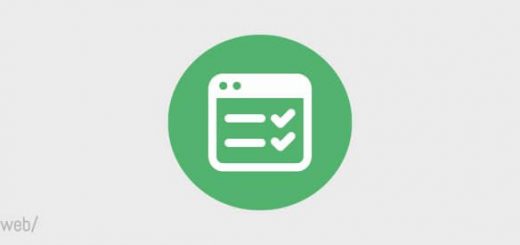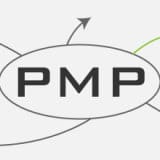Critical Path Method vs Critical Chain Method for PMP Exam

In Project Schedule Management, the most important scheduling methods mentioned in the PMBOK® Guide are Critical Path Method and Critical Chain Method. As their names suggest, there are similarities and differences between the two “Critical” methods.
Article Highlights
Critical Path Method (CPM) vs Critical Chain Method (CCM)
- Critical Path Method (CPM): the Critical Path Method is the most popular scheduling method in the PMP Exam which involves the calculation of early start (ES), early finish (EF), late start (LS) and late finish (LF) through forward and backward passes in the project schedule network diagram. This will facilitate the project manager to estimate the buffers (floats) or the lack of for individual activities on the schedule network path.
- The Critical Path Method focuses on the sequence of activities/tasks to allow the project team to visualize the overall flow of the tasks.
- Critical Chain Method (CCM): the Critical Chain Method actually builds on the Critical Path Method by considering the resource availabilities and their dependencies along all the task chain and adding buffers to the end of the chain to account for scarcity of resources in order to protect the project schedule from slipping. This may result in a new Critical Path to be identified instead of the one found in Critical Path Method.
- The Critical Chain Method is derived from the “Theory of Constraints”, it focuses on resource availability and dealing with uncertainties/changes.
- Instead of micro-managing the schedule of individual activities of the network path with task-based buffers, Critical Chain Method focuses on managing the overall buffer of all the activities on the chain. This will allow the project schedule to be in better control.
- If used properly, the Critical Chain Method will achieve higher efficiency by removing implicit buffers of individual tasks and lower schedule risks.
- There are 3 types of buffers:
- Project Buffer: placed at the end of the project, the project buffer provides contingency for the critical chain activities
- Feeding Buffer: placed at the end of non-critical chains in order to match the the duration of critical chain
- Resource Buffer: placed on the critical chain to allow rooms for the designated resources to work on the critical chain tasks
Illustrated Example
The following is a simplified diagram to illustrate Critical Path Method vs Critical Chain Method:

Critical Path Method vs Critical Chain Method
As can be seen from the above diagram:
- The Critical Path Method allows the project team to easily visualize the sequence of tasks and the estimated duration of individual tasks in a straight-forward manner, something most people are familiar with. However, since there are no overall buffers to be added to the critical path, project team members may, while estimating for the duration of individual tasks, try to add “implicit buffers” conservatively to each task with a view to protect the overall schedule. This may result in “too much” buffers added to the critical path and make the estimation not efficient. The project manager need to monitor closely the progress of individual tasks as one task progresses at a slower than expected pace will adversely affect the whole project schedule.
- The Critical Chain Method, on the other hand, just put the tasks together in a chain by considering the minimal time needed for individual tasks. An overall “project buffer” is added to the end of the chain which provides some protection against the project schedule. This may result in higher efficiency of the buffer estimation by combining the individual implicit buffer for an explicit buffer. Project team members would be able to provide a more aggressive schedule for each tasks as there is an overall buffer to protect the project schedule. The project manager will focus on managing the overall buffer during the executing and monitoring processes.
Summary
How to tell whether the PMP Exam question is asking about Critical Path Method or Critical Chain Method? The easiest way is to look carefully for the terms used to describe the network schedule of the project:
- Terms used in Critical Path Method:
- Forward Pass
- Backward Pass
- Early Start
- Late Start
- Early Finish
- Late Finish
- Slack / Float
- Total Slack / Float
- Calculate the Duration
- Critical Path
- Terms used in Critical Chain Method:
- Project Buffer
- Feeding Buffer
- Resources Buffer
- Critical Chain
- resource constraints
By looking for the above terms, Aspirants will be able to distinguish between Critical Path Method and Critical Chain Method and tackle the questions correctly.
 Additional FREE PMP resources: 47+ Commonly Confused Term Pairs with detailed explanations. If you found this article useful, you may wish to reference other Commonly Confused Term articles.
Additional FREE PMP resources: 47+ Commonly Confused Term Pairs with detailed explanations. If you found this article useful, you may wish to reference other Commonly Confused Term articles.Most Popular PMP Certification Exam Articles
- My Exam Prep Tips and Free Resources (I got 4P and 1 MP)
- How to Get 35 Contact Hours Fast and Easy?
- Detailed Comparision of online PMP Courses
- Over 1000+ FREE Quality Mock Exam / Practice Questions
- A FREE Guide to Formulas and Calculation (with explanation and sample questions)
- 47 Commonly Confused Terms with detailed explanation




 Hi, my name is Edward Chung, PMP, PMI-ACP®, ITIL® Foundation. Like most of us, I am a working professional pursuing career advancements through Certifications. As I am having a full-time job and a family with 3 kids, I need to pursue professional certifications in the most effective way (i.e. with the least amount of time). I share my exam tips here in the hope of helping fellow Certification aspirants!
Hi, my name is Edward Chung, PMP, PMI-ACP®, ITIL® Foundation. Like most of us, I am a working professional pursuing career advancements through Certifications. As I am having a full-time job and a family with 3 kids, I need to pursue professional certifications in the most effective way (i.e. with the least amount of time). I share my exam tips here in the hope of helping fellow Certification aspirants!






Looks to me that there’s a typo both in the diagram and the lines below, where the critical path method is discussed twice. I assume the second one (on both diagram ant text) is the critical chain method, following the order in the rest of the (btw, very good) article.
Hi JM,
Thanks a lot for spotting the typos, my bad. I have amended them asap. You contribution helps fellow PMP Aspirants a lot!
Regards,
Edward